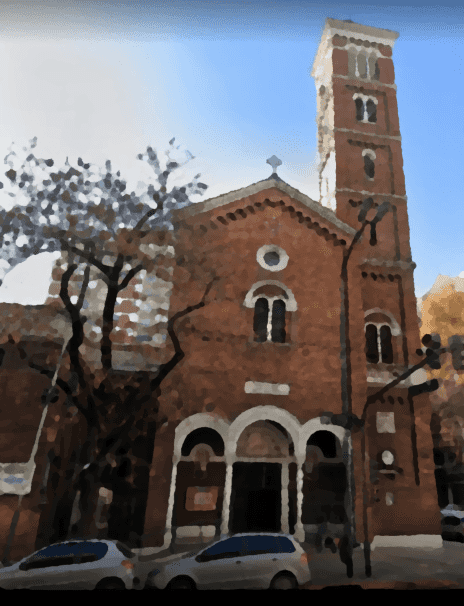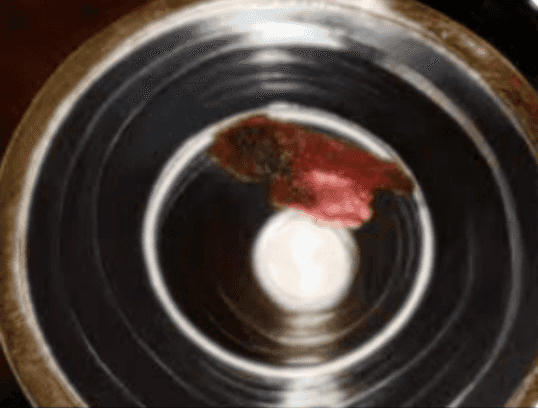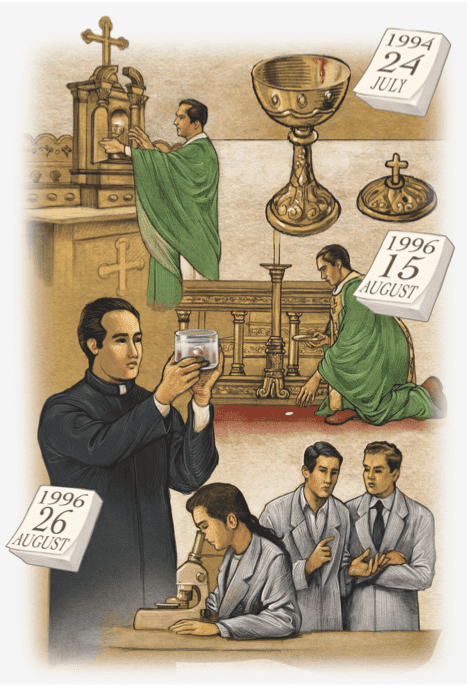Argentina Buenos Aires (1996)
Blood, Mystery, and Miracles: The Unexplained Events at St. Mary's

A Sacred Fall: August 1996
On August 15, 1996, the Feast of the Assumption cast a reverent glow over St. Mary’s Parish in Buenos Aires, Argentina. During Mass, as Father Alejandro Pezet distributed Holy Communion, a consecrated Host—the Body of Christ—slipped from a communicant’s hands and fell to the floor. The church hushed. A parishioner later recalled the moment: “It felt like time stopped, as if something holy had been wounded.” Father Pezet, a priest of quiet resolve, knelt to retrieve the Host. Following Church protocol, he placed it gently into a small glass of water and secured it in the tabernacle of the Blessed Sacrament chapel, intending for it to dissolve naturally—a humble return to the earth.

The Transformation Unveiled
Eleven days later, on August 26, Father Pezet returned to check the vessel. What he saw stole his breath. The Host hadn’t dissolved; it had changed. Streaks of crimson bled into the water, and the wafer now resembled a fleshy, blood-soaked mass, alive with an eerie vitality. “I couldn’t believe my eyes,” he later confided to investigators, his hands trembling at the memory. Word reached Auxiliary Bishop Jorge Bergoglio—later Pope Francis—who oversaw the Archdiocese with a chemist’s precision and a pastor’s faith. On September 6, Bergoglio ordered the phenomenon photographed, the images capturing a startling truth: the Host had grown, its surface a visceral tableau of flesh and blood.
A Hidden Wonder
For three years, the transformed Host rested in the tabernacle, its existence a closely guarded secret. No decay touched it—an anomaly in Buenos Aires’ humid embrace—fueling whispers among the clergy. In October 1999, Bishop Bergoglio, seeking clarity, authorized a scientific investigation. Dr. Ricardo Castañón Gómez, a neuropsychologist and former skeptic, took the lead. “I thought it’d be simple mold or fraud,” he admitted years later. With an archiepiscopal notary present, he extracted samples from the Host, sealing them for analysis. The chain of custody was meticulous, a bridge between faith and reason.
The Heart Revealed: April 2004
On October 5, 1999, Australian investigator Ron Tesoriero joined the effort, partnering with Castañón to document the mystery. After initial DNA tests in 1999–2000 confirmed human DNA without a clear genetic profile—an enigma in itself—the samples reached Dr. Frederick Zugibe, a renowned forensic pathologist in New York, on April 20, 2004. Accompanied by journalist Mike Willesee, Tesoriero presented the tissue blind, its origin undisclosed. Peering through his microscope, Zugibe recoiled. “This is human heart muscle,” he declared, identifying the myocardium of the left ventricle—the heart’s lifeblood pump. More astonishingly, white blood cells swarmed the tissue, active and inflamed, as if torn from a living heart under siege. “It’s been beaten,” he said, noting trauma akin to a brutal blow or crucifixion.

Science’s Astonishment
Zugibe’s final report, delivered in March 2005, deepened the marvel. The tissue showed degenerative changes—oxygen deprivation, inflammation—suggesting a heart struck or suffocating, yet preserved impossibly in water for years. “Cells like these should’ve died,” he marveled, shaking his head. The findings echoed the 8th-century Lanciano miracle, with its AB blood type and myocardial traits, hinting at a timeless thread. Willesee, a hardened reporter, reflected: “Bread turning into a living heart isn’t just a miracle—it’s science staring at the impossible.” The DNA, human yet unprofilable, only thickened the mystery.
A Sign Endures
To the faithful, this was no mere curiosity but a divine whisper: Christ’s real presence in the Eucharist, His heart offered anew. The Host, now enshrined at St. Mary’s, draws pilgrims to kneel before its quiet power. Bergoglio, ever understated, never hyped the event, letting it speak for itself. Tesoriero captured it all in his book, My Human Heart: Where Science and Faith Collide, and documentaries at Reason to Believe. Castañón, once a doubter, found faith through the lens of his microscope. “It’s His heart,” he said softly, “still beating for us.” At St. Mary’s, the miracle lingers—a bridge between flesh and eternity.
Ron Tesoriero has published his findings in a new book, My Human Heart: Where Science and Faith Collide, and in documentaries available at Reason to Believe. You can also watch the documentary on the official investigation at: YouTube.